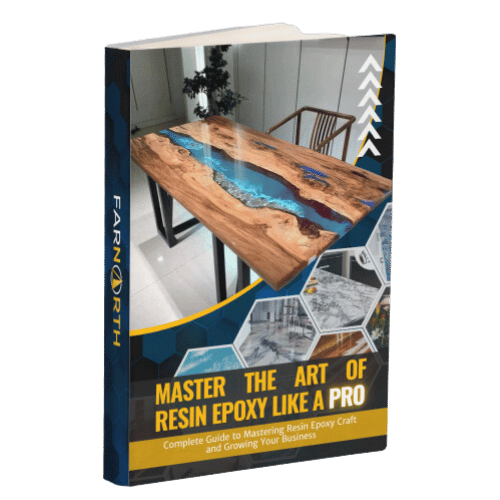Download our
FREE EBOOK
Master The ART OF RESIN EPOXY LIKE A PRO
The Ultimate Guide to Mastering the Art of Resin Epoxy


© 2025 Far North. All Rights Reserved.
If you’ve just stepped into the world of resin epoxy, you’ve probably come across the terms casting and coating. While both involve mixing resin and hardener to create beautiful, durable surfaces, they serve different purposes — and choosing the right one is essential for a successful project.
Let’s break down the difference between casting resin and coating resin so you can pour with confidence.
Casting resin (also known as deep-pour resin) is formulated to be poured in thicker layers — typically 1 to 4 inches deep. It has a longer curing time, which allows air bubbles to rise and escape naturally, giving your piece a smooth, crystal-clear finish.
River tables
Encasing objects like flowers, coins, or shells
Large-volume pours and deep layers
✅ Low viscosity (more liquid-like)
✅ Long working and curing time
✅ Ideal for deep pours
✅ Better bubble release
At FarNorth, we offer PRO Cast, a deep-pour resin with a 2:1 mix ratio — perfect for river tables and thick mold projects.
Coating resin (also called tabletop or surface resin) is designed for thin layers, usually around 1–5mm thick. It cures faster and is ideal for applying a glossy, durable finish on flat surfaces.
Tabletop finishes
Countertops
Coasters and trays
Canvas art and wall pieces
✅ Thicker consistency (higher viscosity)
✅ Shorter working and curing time
✅ Self-leveling for smooth finishes
✅ Ideal for surface protection
Our PRO Surface resin is formulated for these types of projects. It uses a 3:1 mix ratio and cures in 12–15 hours — perfect for countertops and glossy top layers.
| Feature | Casting Resin | Coating Resin |
|---|---|---|
| Pour Depth | Up to 4 inches | Up to 5mm |
| Viscosity | Low (thin) | High (thicker) |
| Curing Time | Long (24–72 hours) | Fast (12–24 hours) |
| Uses | River tables, molds, deep pours | Tabletops, art coating, surfaces |
| Bubble Release | Excellent | Requires torching or heat gun |
| Layering | Can pour thick in one go | Must layer in thin coats |
It all depends on your project:
Doing a deep river table? Go for casting resin.
Adding a glossy top to a bar counter? Use coating resin.
Making jewelry or preserving flowers? Casting resin.
Coating an acrylic painting? Coating resin.
Using the wrong resin can lead to overheating, incomplete curing, or bubbles trapped inside — so always check the product’s intended use before pouring!
Always read the product label and follow the mix ratio, working time, and cure time carefully. And if you’re not sure which resin is right for you, feel free to message us — we’re here to help you pour like a pro.
Ready to get started?
Check out our premium resins:
👉 PRO Cast – Deep Pour Resin Epoxy
👉 PRO Surface – Thin Pour Resin Epoxy
FarNorth Resin Epoxy
Helping makers, artists, and dreamers bring their visions to life — one pour at a time.
The Ultimate Guide to Mastering the Art of Resin Epoxy


© 2025 Far North. All Rights Reserved.